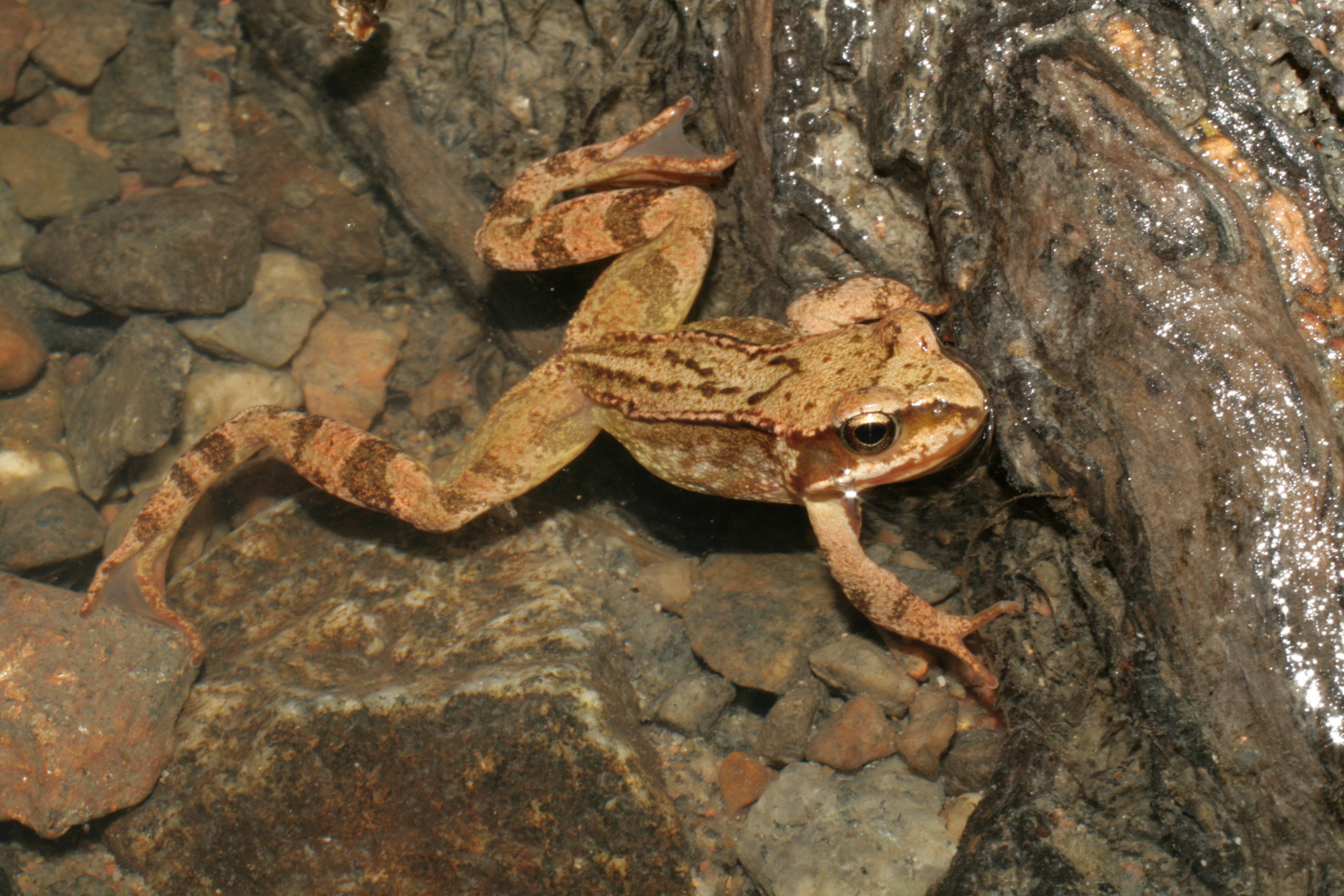The males of the Moor frog are masters of colour change during the mating season.
Description
It is a rather slender, small brown frog with a pointed snout. The pupils are horizontal, the eardrum is clearly visible within the temporal spot, but quite small (size about 2/3 of the eye diameter) and far away from the eye. The body length of males and females ranges from 5 to 6 centimetres, exceptionally up to 8 centimetres. The upper side is light to dark brown, but there are also reddish-brown coloured and heavily black-spotted animals. The brown frog's typical temporal patch behind the eye is dark brown. A broad, light-coloured longitudinal band often runs across the middle of the back, which is lined with dark stripes; however, this may also be missing. The glandular ridges on the back are often white-edged and clearly pronounced. During the peak of the mating season, the skin of males can appear bluish-violet to intense sky-blue due to spectral reflections – either only on some parts of the body, such as around the eardrum and on the flanks, or also on the entire upper side, including the extremities.
Habitat
The Moor frog prefers to colonise habitats with high groundwater levels or periodic flooding dynamics, especially fens, swamp forests, marshy extensive grassland, wet meadows and softwood floodplains of larger rivers, raised bogs and intermediate bogs.
Breeding call
The mating call of the males is a soft gurgling sound like "uog ...uog ... uog..." – similar to the bubbling of escaping air from an empty bottle submerged under water. In Central Europe, the main calling and spawning season is usually in the end of March – beginning of April, or even later in April if the winter is very long. The calls can be heard both during the day (especially when the sun is shining) and at night.
Example breeding call:
Wikimedia Commons Licence Odé Baudewijn CC BY-SA 4.0 international
Source: The description and distribution text is an excerpt from Wikipedia (https://de.wikipedia.org/wiki/Moorfrosch). The text is available there under the licence "Creative Commons Attribution/Share Alike". Status: 10 July 2023. The text on the call consists of excerpts from Wikipedia, adapted from "Die Amphibien Europas: Bestimmung, Gefährdung, Schutz" by Nöllert & Nöllert, Franckh-Kosmos Verlag 1992.

 DE
DE  EN
EN 









